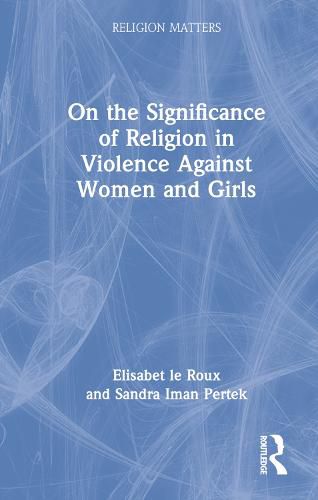Readings Newsletter
Become a Readings Member to make your shopping experience even easier.
Sign in or sign up for free!
You’re not far away from qualifying for FREE standard shipping within Australia
You’ve qualified for FREE standard shipping within Australia
The cart is loading…






In this ground-breaking volume, the authors explore two sides of religion: the ways in which it contributes to violence against women and girls (VAWG), and the ways it counters it.
Aware of the very real impact religion has on the lives of women and girls, it prioritises experiences and learnings from empirical research and of practitioners, and their activities at grassroots-level, to better understand the nature and root causes of VAWG. Drawing on research done in Christian and Muslim communities in various fragile settings with high religiosity, this book avoids simplistically assigning blame to any one religion, instead engaging with the commonalities of how religion and religious actors influence norms and behaviours that impact VAWG. If the sustainable development goal of ending all forms of VAWG is to be achieved, how should actors in the international development sector engage with religion and religious actors? This book unpacks the nature of religion and religious actors in relation to VAWG, with the aim of giving greater clarity on how to (and how not to) engage with this crucial issue.
Combining cutting-edge research with case studies and pragmatic recommendations for academics, policy makers, and practitioners, this concise and easily accessible volume helps instigate discussion and engagement with the incredibly important relationship between religion and VAWG.
$9.00 standard shipping within Australia
FREE standard shipping within Australia for orders over $100.00
Express & International shipping calculated at checkout
In this ground-breaking volume, the authors explore two sides of religion: the ways in which it contributes to violence against women and girls (VAWG), and the ways it counters it.
Aware of the very real impact religion has on the lives of women and girls, it prioritises experiences and learnings from empirical research and of practitioners, and their activities at grassroots-level, to better understand the nature and root causes of VAWG. Drawing on research done in Christian and Muslim communities in various fragile settings with high religiosity, this book avoids simplistically assigning blame to any one religion, instead engaging with the commonalities of how religion and religious actors influence norms and behaviours that impact VAWG. If the sustainable development goal of ending all forms of VAWG is to be achieved, how should actors in the international development sector engage with religion and religious actors? This book unpacks the nature of religion and religious actors in relation to VAWG, with the aim of giving greater clarity on how to (and how not to) engage with this crucial issue.
Combining cutting-edge research with case studies and pragmatic recommendations for academics, policy makers, and practitioners, this concise and easily accessible volume helps instigate discussion and engagement with the incredibly important relationship between religion and VAWG.